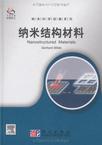纳米结构材料
2010-3
科学出版社
维尔德
374
本书立足于纳米材料及其功能。 纳米材料包括金属、陶瓷、聚合物以及复合材料等。本书重点介绍了纳米材料的功能,特别是短期内有应用前景的功能,例如催化、能量采集、能源存储、光学性质以及通过自组装实现的表面功能化。 此外,本书还讨论了纳米晶态材料和纳米复合物,其内容涵盖了这类新型工程材料的基本性质和要求。其中,稳定性、可靠性和机械性能是这类材料值得特别关注问题。 本书比较了合成上述纳米材料的各种方法,并在统筹各章节的基础上概述了纳米技术的前景。
编者1.纳米功能材料——微观结构、热力学稳定性和原子迁移率2.纳米材料的可靠性3.纳米复合物材料的力学性能4.用于低温燃料电池的负载型纳米催化剂5.纳米晶太阳能电池6.用于氢气和能源存储的纳米材料7.具有多级结构的材料及其光学应用8.纳米颗粒在界面组装形成高度有序的图案化结构索引
As nanostructured materials are structures far away from thermodynamic equilibrium and since they have short transport pathways, fast diffusion and rapidtransformation kinetics often lead to coarsening and to the deterioration of themicrostructure and the associated properties. Thus, ensuring the stability of thenanoscale structures is a key issue. Aside from restricting the range of candidate materials to the class of refractories such as ceramics or high-melting pointmetals that are kinetically stabilized at or near ambient conditions, a compositeapproach involving either two nanosized phases or an extended polycrystallineor amorphous matrix and a nanocrystalline pore phase are obvious solutions forthe latter issue since the material transport required for coarsening is severelyhampered by a composite structure with limited mutual solubility. This routealso includes surface-functionalized nanoparticles as, for example, presented bymetallic nanoparticles with a shell consisting of organic ligands or of a naturaloxide of the metal [60]. However, it is inherent to nanocrystalline materials thatthe analysis of microstructure-property relations needs to consider internal interfaces rather than the surface of the nanoscaled structural units. Especially withtwo-phase nanocomposites, heterophase interfaces with the additional degree offreedom given by the position-dependent composition and possible concentration gradients need to be regarded. An important and basic aspect concerningthe functionality of a given material is presented by the respective phase equilibrium that determines the stable structure and the phase distribution and thus therelated materials properties. In fact, modifying the phase equilibrium by alloyingto improve the performance of a material has been the first and most successful step to modern materials science. However, the phase diagrams are mostlyunknown for nanostructured materials. In fact, some observations on ligandcapped magnetic nanoparticles indicate that the energetic contribution due to thebonds at the interface effectively shift the underlying phase stability ranges suchthat the equilibrium phase is different for the coarse-grained or the nanocrystalline material [60]. Yet, as will be shown below, already the presence of internalheterophase interfaces contributing an excess free energy is sufficient to modifyseverely the phase equilibrium and the associated phase transformations in nanosize alloy systems. Even the accepted rules to construct phase diagrams need tobe modified if nanoscaled alloy systems are considered [61]. ……
按纳米材料功能进行章节划分,将合成、表征和应用融为一体。介绍纳米材料在新能源领域的应用,以及由其形成的多级结构和组装体。由相关领域的知名专家共同编写,涉及纳米材料领域众多研究热点。适合从事纳米材料、新能源等相关领域的研究人员参考。 《纳米结构材料(导读版)》的目录和编者均已译成中文.正文保留英文原版。另附清华大学化学系李亚栋教授所作中立导读一篇。

这个商品不错。。。赞一个。。。